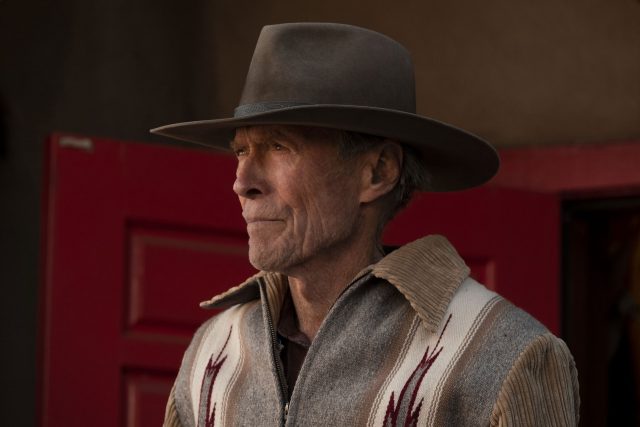Cry Macho: Asleep in the Saddle, by David Bax

Despite being set in the relatively recent 1970s, Clint Eastwood’s Cry Macho, in which an out-of-commission rodeo rider is enlisted by his ex-employer to go down to Mexico and retrieve the man’s son, Rafo, from an unfit mother, belongs to the tradition of Westerns about men on rescue missions, with Mexican henchmen standing in for Native Americans and every bit as sensitive as that sounds. But then again, since cars exist, it also belongs to the tradition of road trip movies. Oh, and it definitely belongs to the tradition of movies where a tough guy gets paired up with a young tyke. Cry Macho is assembled from a collection of tropes. This isn’t a problem, on the face of things; much of Eastwood’s work as a director uses existing genre molds to examine his various concerns (read: American masculinity). But the familiarity is glaring here because the film says nothing new and does so lazily.
Or, on the other hand, maybe Cry Macho‘s screenplay (adapted by Nick Schenk from N. Richard Nash’s novel) is actually doing too much work. The film has a stubbornly uncinematic way of overexplaining itself, like when Eastwood’s Mike Milo finds the kid (Eduardo Minett) and, in short order, gets the boy’s entire life story. We even get explanations of things we can see with our own eyes. As he takes detour on the way back to the border, Mike says, “We’re gonna take this road.” It feels like watching a movie and listening to the audiobook at the same time.
What else is he going to say, though, given how thinly drawn a character he is? Everywhere he goes, he’s just the gringo who shows up and is good at everything. Near the end, when the woman with whom he’s been playacting domesticity while laying low (Natalia Traven) tells him, “You’re a good man,” the moment falls flat because, yeah, we know he is. It’s all we know about him.
Compare that to other late period Eastwood-directed movies like The Mule and Gran Torino, the two of which I was most reminded here. In the former, his character was similarly out of options but desperation made him vulnerable to his worst impulses. Here, it just makes him blandly sympathetic. And, like in Gran Torino, Eastwood is again playing a man from the past but now there’s no friction, no struggle to find his place. Mike seems to adapt pretty quickly to every situation, not learning anything about himself or even being given the opportunity to do so.
Maybe the closest Cry Macho comes to Gran Torino is in the character’s matter-of-fact xenophobia. He speaks to every Mexican he meets in English, apparently considering it their problem if they don’t understand. He also appears to casually imply to a rancher that Texans care more about horses than Mexicans do. These moments are more intriguing than almost anything else in the movie because they’re the only times there is any charge in the air.
As for any other good moments, look to the movie’s most languid scenes, the ones where Mike and Rafo hang out in a tiny village, doing odd jobs and chatting with locals. In this scenes, we’re given the chance to just look and enjoy. Eastwood has worked with a lot of cinematographers in his years as a director (here he teams up for the first time with MCU vet Ben Davis) but the unfussy framing and crepuscular light of his movies has persisted, reminding us that there’s an artfulness to his workaday stories. Cry Macho is definitely lesser Eastwood. But, Eastwood is not the worst director to get the lesser side of.






























